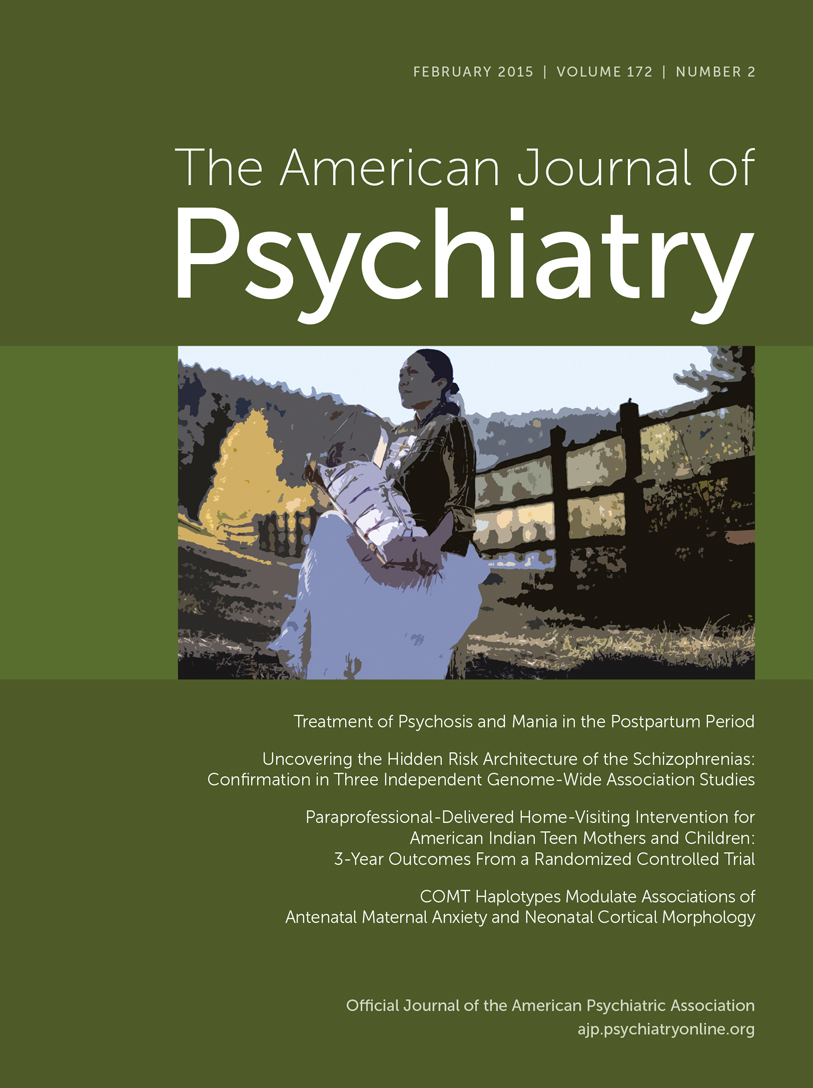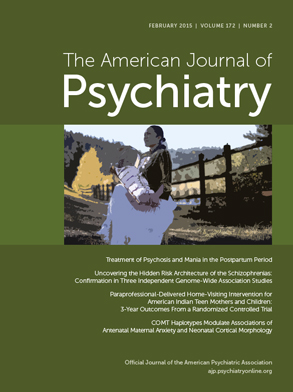Human pregnancy is a unique biological and psychological enterprise. It can be argued that no other human life event is more important for the baby, nor more anxiety-provoking for the mother, than pregnancy. In large surveys of stressful life events, it is in the top group, just below marriage (
1). The circumstances of pregnancy vary. Conception itself can be planned, a surprise, or, in instances of violence, forced upon a woman, and the healthy outcome of the pregnancy for both mother and child is inevitably a focus of concern. Most pregnant women experience quantitative elevations of anxiety during pregnancy. But how much worry is too much? How a woman and her unborn child experience the anxiety of pregnancy is the result of a complex interplay between the woman’s environment and biology (genome, epigenome, and brain functioning) and that of the fetus. Thousands of scientific reports have provided evidence of the negative sequelae associated with antenatal anxiety, along with depression, substance abuse, pregnancy-emergent health problems, adversity, and socioeconomic disadvantage (
2). Yet few of these studies have provided clear scientific evidence on causal links between a stressor and the development of the child in utero.
The article by Anqi Qiu, Ph.D., et al. (
3), in this issue of the
Journal, provides one important example of how to advance the study of the effects of the mother’s state during pregnancy on the child’s development. By combining state-of-the-art phenotypic, genomic, neuroimaging, and statistical methods, Qiu et al. advance the investigation of the etiopathologic relations between maternal anxiety and child outcomes. Understanding how maternal anxiety interacts with offspring genomic architecture and ultimately leads to changes in the structure of the neonatal brain may provide clues as to why some children struggle from birth and others do not. Qiu et al. studied the effect of maternal anxiety on neonatal brain structure through the use of novel methods and design (GUSTO [Growing Up in Singapore Toward Health Outcomes]). They obtained T
2-weighted MRI scans of 189 neonates at 5 to 17 days of life and measured the thickness of the neocortex in several regions. This thickness at birth indicates the degree of development of the neurons and connections in the child’s brain during fetal development.
The investigators assessed maternal anxiety at the mid-third trimester of pregnancy to generate a single score combining anxiety levels both at that time and before pregnancy. These anxiety measures were correlated with the mother’s household income and her ethnicity, which could be Chinese, Malay, or Indian in Singapore where the study was conducted. Catechol-O-methyltransferase (COMT) genetic differences were captured by polymorphisms at three genetic locations, the best known of which is the val-met amino acid coding difference. Some differences in genotype between the three ethnic types exist, and these differences, inevitable in any human genetic study, were controlled for. Final analyses took birth weight and length of gestation into account. The results showed that neither the mother’s anxiety nor the baby’s genotype by themselves affected the thickness of the baby’s cortex. However, in several regions, there were different effects of maternal stress, depending on the baby’s genotype. For example, in the right ventromedial prefrontal cortex, an area involved with the regulation of anxiety and mood, maternal anxiety decreased cortical thickness in babies with two copies of the COMT met allele but increased cortical thickness in babies with two copies of the more common COMT val allele. The investigators point out that dissecting this complex interaction helps pinpoint effects of the mother’s anxiety on the baby’s brain development that would be obscured in most studies that did not consider the baby’s own genetic predisposition.
The GUSTO design is unique in that it removes the biggest scientific obstacle that faces most birth cohort studies that aim to examine antenatal factors. In the majority of birth cohort imaging studies that study the offspring years after birth, perhaps even into adulthood, the participant continues to reside with his or her mother and thus is continuously exposed to the mother’s environment and, with respect to this research question, her anxiety. It is then not possible to tease out whether the effects of maternal anxiety on the child are a result of antenatal or postnatal effects. The elegance of the design in the GUSTO study is that it allows us to know the burden of antenatal maternal anxiety on the baby’s brain shortly after birth. In addition, as the GUSTO sample ages, the investigative team will be able to test for effects of postnatal maternal factors as well.
Given the wide array of genomic strategies Qiu et al. had at their disposal, the choice of possible genetic variables can be less than straightforward. However, they make a logical decision that is informed by the literature. By anchoring their choice to a candidate gene for which extensive basic science and genetic neuroimaging evidence exists, the authors provide us with a biologically plausible explanation of how the environment might interact with the genome to influence the proteome (e.g., cortical thickness).
COMT, perhaps the second most studied gene in human behavior research (relative to the serotonin transporter [SERT] gene), is an appropriate choice. Qiu et al. draw from key basic neuroscience references, providing evidence for
COMT playing a significant role in catecholamine signaling in the prefrontal cortex (
4–
6). In addition, multiple studies are presented that demonstrate the contribution of
COMT variation in the cortical thickness of the prefrontal, temporal, and parietal regions in neonates and adolescents (
7,
8). Lastly, the authors provide the arguments that the same
COMT variants play a key role in a variety of emotional behavioral phenotypes, including anxiety (
9).
From this study, we learn that maternal anxiety during pregnancy may have effects on offspring brain structure and quite possibly longer-term effects on the child’s arc of emotional and intellectual development. Even at this stage, the baby’s own genetic status can either amplify or prevent such effects. Developing an evidence base that demonstrates the biological links between environmental factors, genetic risk, and brain structure and function may help set future research and intervention agendas. Given how common antenatal anxiety is, and how responsive anxiety is to social supports and meditation (
10), exercise (
11), and cognitive-behavioral therapy (
12), it seems obvious that a new type of birth cohort study should follow. It is tantalizing to envision a study in which the power of genomics and neuroimaging is applied to the effects of an interventional birth cohort design aimed at treating maternal anxiety and estimating the effects on newborns’ cortical thickness.
It would be wonderful to see whether the brains of babies born to anxious mothers who benefit from health promotion and prevention will be free of the scars of antenatal anxiety, regardless of their genotypes.

